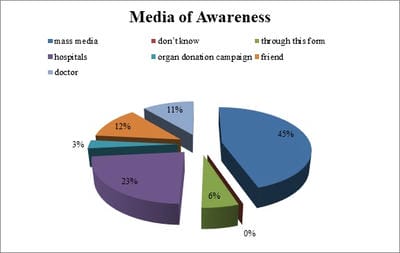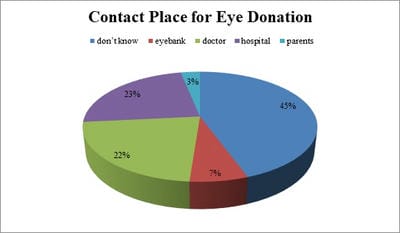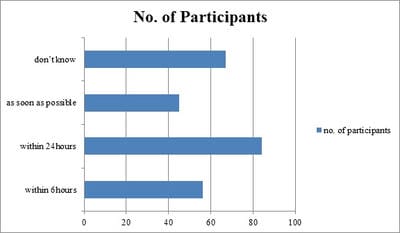Eye donation awareness and willingness among patients attending ophthalmology OPD at Goa medical college and hospital
Gaunekar A.1*
DOI: https://doi.org/10.17511/jooo.2020.i08.08
1* Ankita Gaunekar, Consultant Eye Surgeon, J.M.J Hospital, Goa, India.
Introduction: Significant cause of corneal blindness in India is due to trauma and corneal ulcers. India needs 2.5lakh donated corneas every year, the country’s eye banks manage to collect only about 44806, out of these only some are utilized for sight restoration as the others do not meet the standard for transplantation. The present study aimed to evaluate the awareness regarding eye donation among the patients and their relatives attending the outpatient department (OPD) at Goa Medical College and hospital, giving them the knowledge and thus encouraging them to pledge their eyes for donation, which is the need of the hour. Material and Methods: This study was conducted on 300 patients who attended ophthalmology OPD (outpatient department) at Goa medical college and hospital. This is a closed-end type of study wherein the patients who were willing to participate in the study were requested to fill the form and answer 10 questions related to the awareness of eye donation and willingness to donate eyes. The questionnaire had the first few questions regarding brief details about each participant followed by 10 questions which had multiple options and participants were requested to answer as per their choice. It was a pretested questionnaire that included questions on eye donation awareness, knowledge regarding the subject, and willingness to donate eyes. All participants were well informed about the study type and written informed consent was taken for the same. No patients were harmed during the study. Results: The results showed that 252 (84%)among 300 patients were aware of eye donation. Awareness was maximum through mass media and hospitals. 68% of responders were not aware that there is an eye bank in Goa. 79% of responders were not aware that only cornea is removed from the donor’s eye. Only about 32% of the patients were willing to donate their eyes.
Keywords: Awareness, Eye donation, Knowledge, Outpatient department
| Corresponding Author | How to Cite this Article | To Browse |
|---|---|---|
| , Consultant Eye Surgeon, J.M.J Hospital, Goa, India. Email: |
Gaunekar A. Eye donation awareness and willingness among patients attending ophthalmology OPD at Goa medical college and hospital. Trop J Ophthalmol Otolaryngol. 2020;5(8):243-249. Available From https://opthalmology.medresearch.in/index.php/jooo/article/view/176 |


 ©
© 


